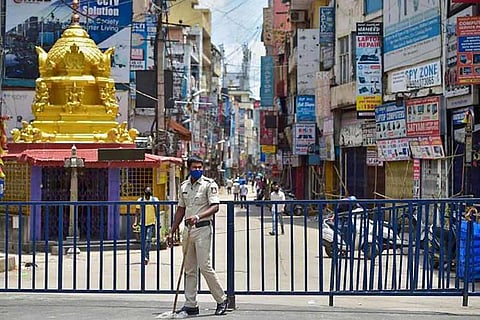

As the second wave of COVID-19 and the resultant lockdowns have shut down economic activities to a great extent, the monthly RBI Bulletin has said that demand and employment have been among the most impacted economic aspects. The RBI Bulletin for May 2021 noted that the real economy indicators moderated through April-May 2021.
"The biggest toll of the second wave is in terms of a demand shock — loss of mobility, discretionary spending and employment, besides inventory accumulation, while the aggregate supply is less impacted," it said.
It, however, noted that the resurgence of COVID-19 has dented, but not debilitated economic activity in the first half of Q1 2021-22. Although extremely tentative at this stage, the central tendency of available diagnosis is that the loss of momentum is not as severe as at this time a year ago, it added.
Writing on the ‘State of the Economy’, senior officials including Deputy Governor Michael Debabrata Patra noted that agriculture continued to be robust at this critical juncture and industrial production spiked after a two-month contraction riding on a favourable base effect.
The Bulletin noted that the impact of new infections appears to be U-shaped. “Each shoulder of the U represents sectors that are weathering the storm — agriculture at one end and IT on the other. On the slopes of the U are organised and automated manufacturing on one side and on the other, services that can be delivered remotely and do not require producers and consumers to move. These activities continue to function under pandemic protocols,” the officials wrote.
The most vulnerable are in the well of the U, which includes blue collar groups that risked exposure for a living for the rest of the society to survive; doctors and healthcare workers; law and order; municipal personnel; small businesses; and they warrant priority in policy interventions, officials observed.
While lockdowns have worked in controlling transmissibility, there is more work to be done, they wrote adding that localised lockdowns rather than nationwide lockdowns are preferred to balance infections vis-a-vis economic loss. The key lesson from the second wave is to vaccinate people, they added.
On the NBFC segment, the report said that the consolidated balance sheet of NBFCs grew at a slower pace in Q2 and Q3 2020-21. However, NBFCs were able to continue credit intermediation, albeit at a lower rate, reflecting the resilience of the sector.
The Reserve Bank and the government undertook various liquidity augmenting measures to tackle Covid-19 disruptions, which facilitated favourable market conditions as indicated by the pick-up in debenture issuances.
“Among sectors NBFCs lend to, the industrial sector, particularly micro and small and large industries, were the hardest hit by the pandemic as they posted decline in credit growth,” the authors added.
With IANS inputs